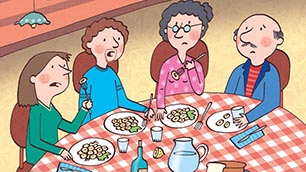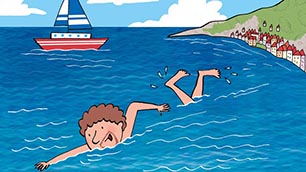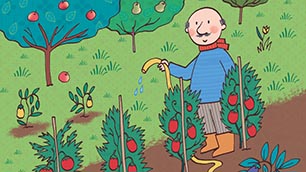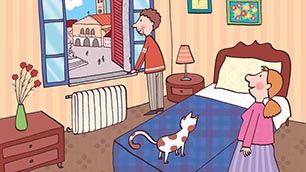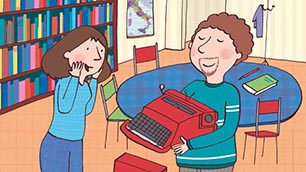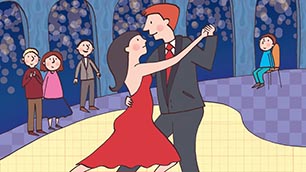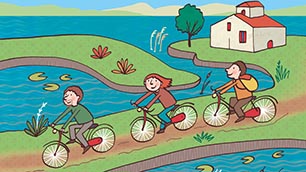| Silvia: | Connor, during our prima lezione di grammatica we conjugated the verbo essere. |
| Connor: | Esatto. |
| Silvia: | Today we’ll practice some more with the verbo essere per tradurre due espressioni of the lingua inglese: there is e there are. In italiano we say c’è e ci sono. |
| Connor: | C’è e ci sono. |
| Silvia: | Molto bene. |
| Connor: | Can you give me un esempio? |
| Silvia: | Certo! Here we go, ci sono molte chiese in Italia. |
| Connor: | C’è un’amica americana who lives in Roma. |
| Silvia: | Keep going... |
| Connor: | C’è un park next to my casa where c’è un lake. In the lake ci sono tre ducks. |
| Silvia: | Benissimo! Let’s experiment now with the same espressioni in the negative form: non c’è e non ci sono. |
| Connor: | Non c’è un park next to my casa. Non c’è un lake. Non ci sono tre ducks. |
| Silvia: | Let’s make un viaggio virtuale a Roma... a Roma c’è... |
| Connor: | A Roma c’è the Colosseo. A Roma ci sono molte vespe. A Roma c’è Castel Sant’Angelo... a Roma c’è the most romantica cosa in the world... |
| Silvia: | Ah sì? |
| Connor: | Sì! A Roma c’è una... fonte! |
| Silvia: | You meant una fontana? |
| Connor: | Sì! A Roma c’è Fontana di Trevi! I want to wade in it! |
| Silvia: | C’è un problema. |
| Connor: | Which problema? |
| Silvia: | You can’t wade into the Fontana di Trevi... |
| Connor: | But the movie... film... c’è Anita Ekberg in the Fontana di Trevi! Why can’t I do the same thing? |
| Silvia: | Because that was un film, Connor. But, you are more than welcome to throw una moneta in the fontana and esprimere un desiderio to come back to Roma. |
| Connor: | Ci sono molte monete in the Fontana di Trevi? |
| Silvia: | It’s filled with coins! |
| Connor: | Silvia, I do not understand the ci in this espressione... |
| Silvia: | C’è una ragione grammaticale... Let’s say that è una ragione un po’ complicata. For now we’ll just practice c’è and ci sono without worrying too much about the grammatica... OK? |
| Connor: | OK... |
| Silvia: | We Italians have another parola per tradurre there is e there are. È the parola ecco, which is used to point out the existence of something in view. È invariabile e can be used with parole singolari o plurali. |
| Connor: | C’è una parola nuova e... how did you say? Complicata? |
| Silvia: | Non è complicata... let me give you un esempio. Siamo a Roma. I am strolling around the city on a sunny day... and suddenly... Ecco! I see the fiume Tevere shining in the distance e Castel Sant’Angelo! |
| Connor: | Ecco un bellissimo dream! |
| Silvia: | Ci sono molti sogni, but ecco una bella realtà: Roma! |
| Connor: | C’è Roma e ci sono i sogni! |
| Silvia: | I think you’re making progress, Connor! |







